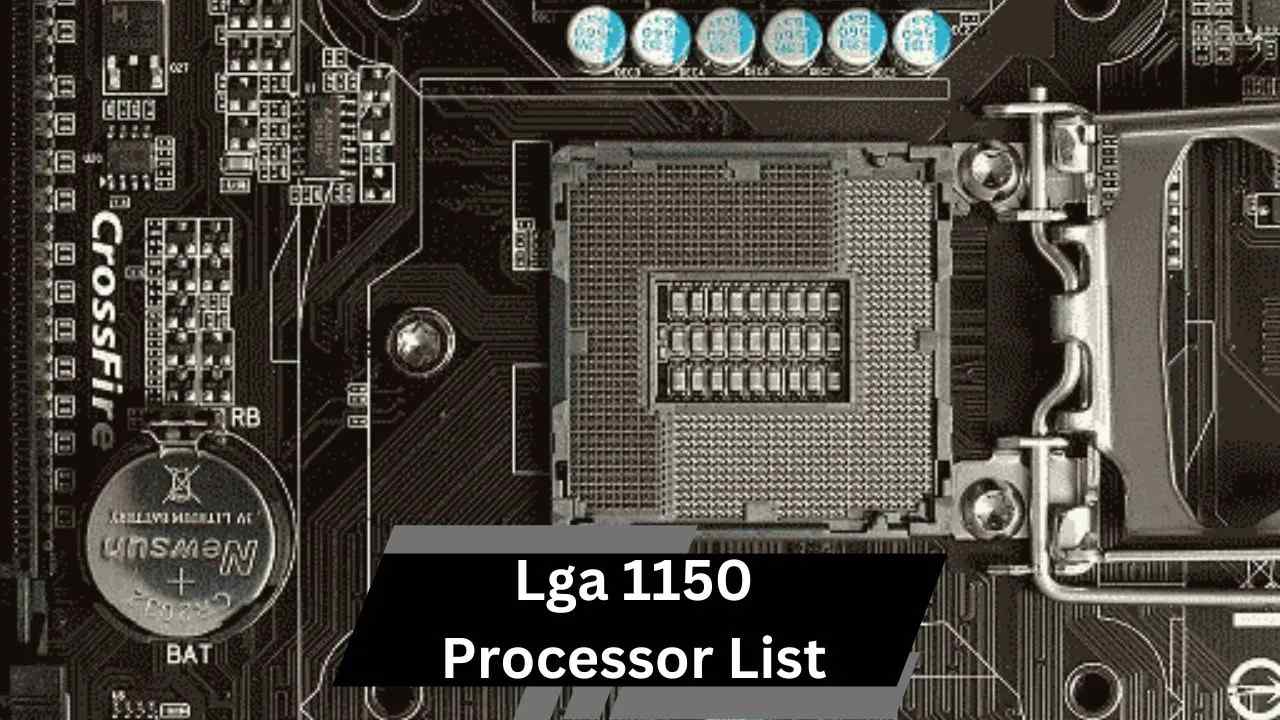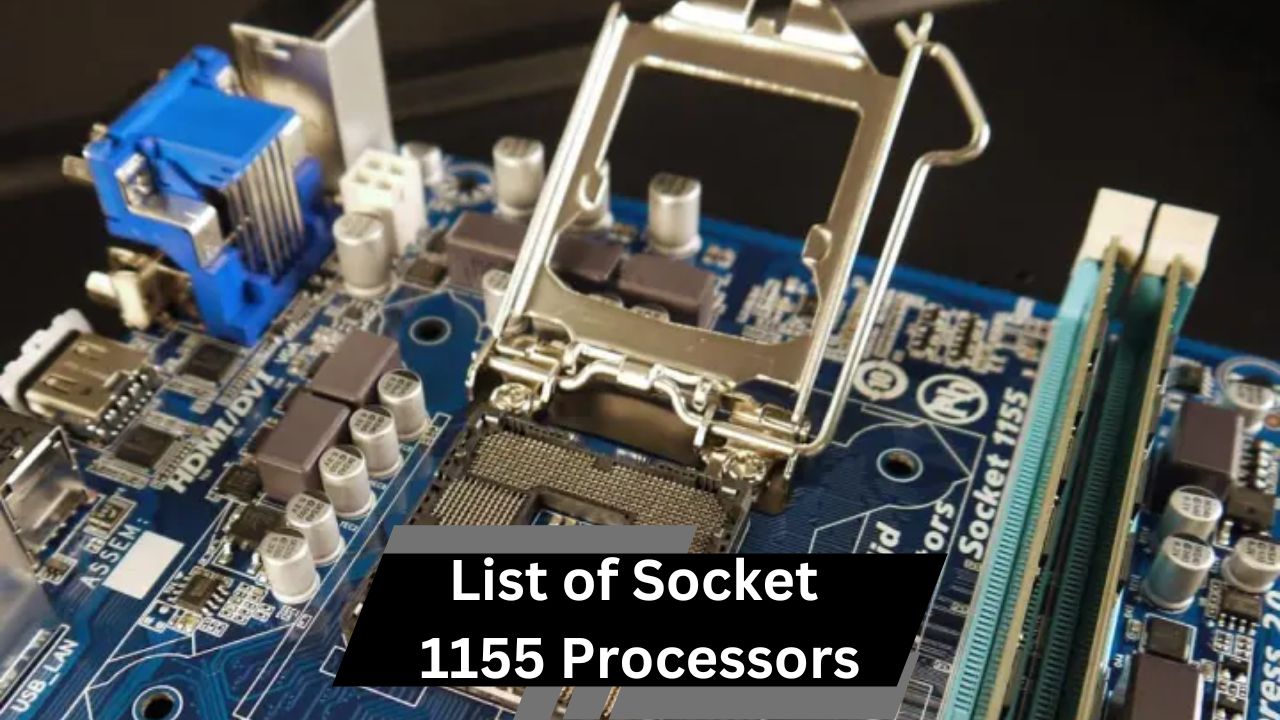LGA 2011 processors are powerful CPUs for gaming, content creation, and servers, featuring multi-core architecture and overclocking, requiring efficient cooling.
Introduction to LGA 2011 Socket:
The LGA 2011 socket, also known as Socket R, was introduced by Intel in 2011. It was designed to cater to the needs of high-performance desktops, workstations, and servers. Unlike regular CPUs used in everyday computers, LGA 2011 processors are meant for users who need serious computing power, whether for gaming, content creation, or managing heavy workloads.
The “2011” in its name refers to the number of pins on the socket, which connect the processor to the motherboard. This large number of pins ensures fast and stable communication between the processor and the rest of the system.
Key Features of LGA 2011 Processors:

LGA 2011 processors stand out due to several key features that make them suitable for demanding tasks:
- Multi-Core Architecture: These processors usually have multiple cores, typically ranging from four to twelve. More cores allow the processor to handle multiple tasks at once, making it ideal for activities that require multitasking, such as video editing or running complex software.
- High TDP (Thermal Design Power): LGA 2011 processors have a higher TDP compared to regular processors. This means they can operate at higher speeds and perform better under heavy loads, but they also produce more heat and require better cooling solutions.
- Quad-Channel Memory Support: These processors support quad-channel memory, which means they can access four memory sticks at the same time, leading to faster data processing and higher memory bandwidth.
- Overclocking Capability: Many LGA 2011 processors are designed to be overclocked. Overclocking is the process of increasing the processor’s clock speed beyond its factory settings to achieve better performance. This is particularly attractive to gamers and tech enthusiasts.
Popular LGA 2011 Processor List:
Here’s a list of some popular LGA 2011 processors, each known for its specific strengths and applications:
Intel Core i7-3960X Extreme Edition:
- Cores/Threads: 6/12
- Base Clock: 3.3 GHz
- Turbo Boost: 3.9 GHz
- TDP: 130W
- Key Features: This was one of the first processors available for the LGA 2011 socket and quickly became popular for its high performance in gaming and creative tasks like video editing.
Intel Core i7-4930K:
- Cores/Threads: 6/12
- Base Clock: 3.4 GHz
- Turbo Boost: 3.9 GHz
- TDP: 130W
- Key Features: The i7-4930K is favored by gamers and tech enthusiasts for its unlocked multiplier, making it easier to overclock and customize for better performance.
Intel Core i7-4960X Extreme Edition:
- Cores/Threads: 6/12
- Base Clock: 3.6 GHz
- Turbo Boost: 4.0 GHz
- TDP: 130W
- Key Features: As a top-tier processor, the i7-4960X offers excellent performance for demanding applications. It’s particularly well-suited for users who need a powerful CPU for tasks like 3D rendering or complex simulations.
Intel Xeon E5-2620 v3:
- Cores/Threads: 6/12
- Base Clock: 2.4 GHz
- Turbo Boost: 3.2 GHz
- TDP: 85W
- Key Features: Designed primarily for servers and workstations, the Xeon E5-2620 v3 offers balanced performance with lower power consumption, making it a reliable choice for environments where stability is critical.
Also read: How many Processor Cores do i Need – A Complete Guide!
Intel Xeon E5-2697 v2:
- Cores/Threads: 12/24
- Base Clock: 2.7 GHz
- Turbo Boost: 3.5 GHz
- TDP: 130W
- Key Features: This processor is ideal for multi-threaded applications and workloads that require a lot of computational power. With 12 cores and 24 threads, it’s perfect for tasks like large-scale data processing or high-end server management.
Intel Xeon E5-2687W v3:
- Cores/Threads: 10/20
- Base Clock: 3.1 GHz
- Turbo Boost: 3.5 GHz
- TDP: 160W
- Key Features: The Xeon E5-2687W v3 is designed for high-performance workstations. It offers superior speed and efficiency for demanding tasks, making it a great choice for professionals who work with intensive applications like 3D modeling or scientific computing.
Performance and Applications of LGA 2011 Processors:
LGA 2011 processors are known for their high performance and versatility, making them suitable for a wide range of applications:
- Gaming: With their high core counts and fast clock speeds, LGA 2011 processors are well-suited for gaming, especially in high-resolution settings or for games that demand a lot of processing power. Gamers who want the best possible experience often choose these processors to ensure smooth gameplay and quick load times.
- Content Creation: For those involved in video editing, 3D rendering, or other creative tasks, LGA 2011 processors provide the necessary power to handle large files and complex projects. Their ability to process multiple tasks at once makes them ideal for content creators who need to run multiple software applications simultaneously.
- Server and Workstation Use: The Xeon variants of LGA 2011 processors are built for reliability and stability in server and workstation environments. They can handle large-scale data processing, virtualization, and database management, making them a solid choice for businesses and IT professionals who require consistent performance.
Advantages and Disadvantages of LGA 2011 Processors:
Advantages:
High Performance: LGA 2011 processors excel in multi-threaded applications and can handle heavy workloads efficiently.
Scalability: With multiple cores and threads, these processors can be scaled up to meet the demands of various tasks, from gaming to professional workloads.
Quad-Channel Memory: The support for quad-channel memory means faster data processing, making these processors particularly useful in tasks that require a lot of memory bandwidth.
Disadvantages:
- Power Consumption: Due to their high TDP, LGA 2011 processors consume more power, which can lead to higher electricity costs and the need for better power management in some environments.
- Heat Generation: These processors generate more heat than typical CPUs, which means they require efficient cooling solutions to prevent overheating and ensure stable performance.
- Cost: LGA 2011 processors and the compatible motherboards are generally more expensive than mainstream options, making them a bigger investment upfront.
Compatibility Considerations:

When building or upgrading a system with an LGA 2011 processor, it’s essential to ensure that all components are compatible:
- Motherboard: The motherboard must have an LGA 2011 socket and be compatible with the chipset required by the processor. It’s also important to check for features like support for quad-channel memory and PCIe lanes that meet your needs.
- Memory: To take full advantage of the processor’s capabilities, you should use DDR3 or DDR4 memory that supports quad-channel configurations. This will ensure that you get the best possible performance from your system.
- Cooling Solution: Given the higher heat output of LGA 2011 processors, investing in a high-quality cooling system is crucial. Whether you choose air cooling or liquid cooling, make sure it’s capable of handling the processor’s thermal demands.
Future of LGA 2011 Processors:
While the LGA 2011 socket has been succeeded by newer platforms like LGA 2066 and LGA 1200, it remains relevant for specific uses, particularly in servers and older workstations. For users who need consistent performance and are considering upgrading or building a system using refurbished components, LGA 2011 processors still offer excellent value. They provide a solid foundation for users who require powerful computing solutions but may not need the absolute latest technology.
FAQ’s:
1. What is an LGA 2011 processor?
LGA 2011 processors are high-performance CPUs designed by Intel, used mainly in workstations, servers, and high-end desktop systems.
2. What are the main features of LGA 2011 processors?
Key features include multi-core architecture, quad-channel memory support, high TDP, and the ability to overclock for enhanced performance.
3. Which processors are compatible with the LGA 2011 socket?
Compatible processors include Intel Core i7 models like the i7-3960X and i7-4930K, as well as Intel Xeon E5 series like the E5-2620 v3 and E5-2697 v2.
4. What is the primary use of LGA 2011 processors?
These processors are primarily used in applications requiring high computational power, such as gaming, content creation, and server management.
5. What are the disadvantages of using LGA 2011 processors?
Disadvantages include higher power consumption, increased heat generation requiring better cooling, and generally higher costs compared to mainstream CPUs.
Conclusion:
The LGA 2011 processor list showcases a range of high-performance CPUs that have had a significant impact on the computing world. Whether you’re a gamer, content creator, or IT professional, these processors offer robust performance and reliability. Even though newer options are available, LGA 2011 processors continue to be a solid choice for those who need powerful and dependable computing solutions.




